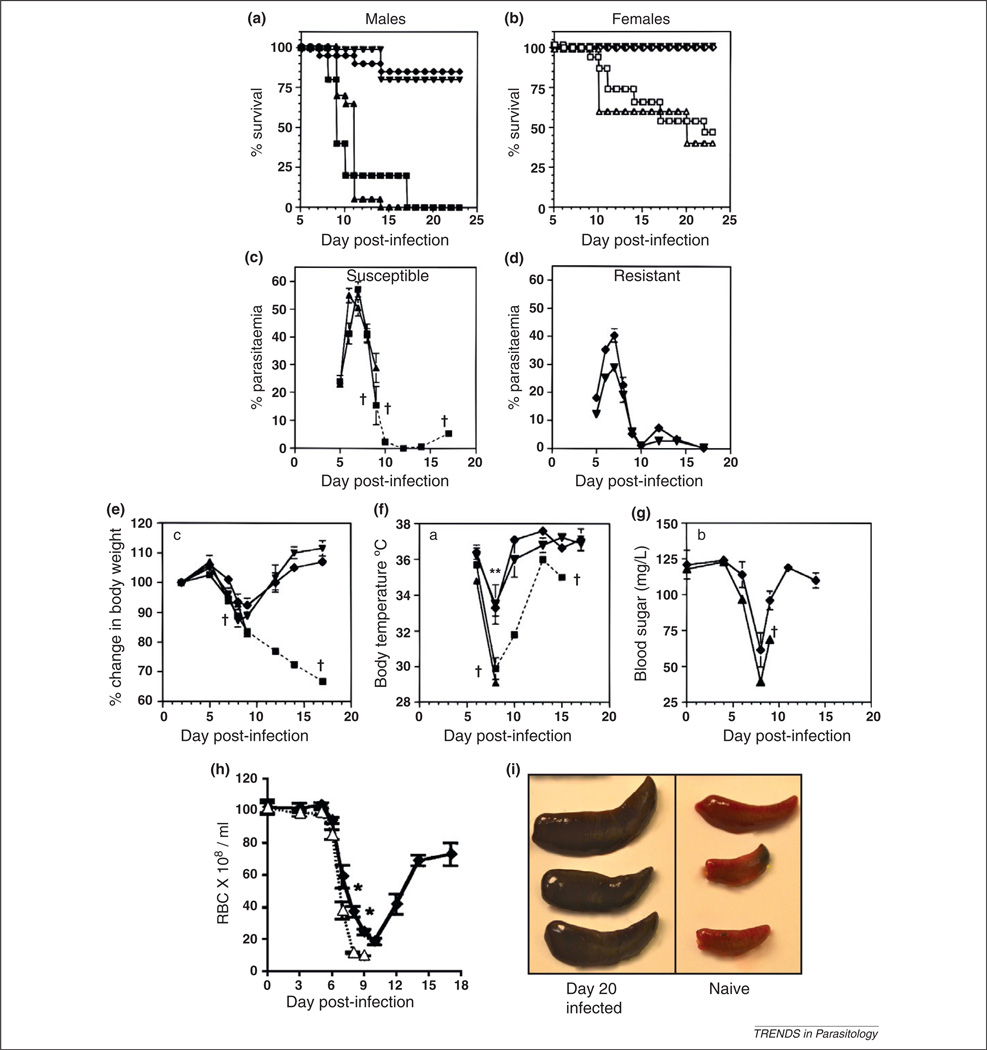Figure 1.
Pathological features of P. chabaudi AS infection. The survival of mice aged 6–10 weeks infected intraperitoneally with 105 P. chabaudi AS is dependent on mouse genetic background and differs between males (a) and females (b). Results are presented as the percentages of 5–15 mice per group surviving on a particular day; % circulating parasitemia (monitored by Giemsa-stained thin blood smears) peaks between days 7–9 and is higher in susceptible male mice [A/J and DBA/2 (c)] than in resistant male mice [B10.A and B10.D2 (d)]. Results are presented as the arithmetic means of 5–10 mice per group ± SEM. One surviving A/J male mouse which died at day 17 postinfection is represented with a broken line. During infection mice lose weight (e), become hypothermic (f) and hypoglycemic (g); all these parameters return to normal levels upon clearance of the peak of parasitemia. Data presented are the mean values ± SEM for five mice per group. Mice also become anemic from P. chabaudi infection (h). Resistant C57BL/6 (◆) and susceptible A/J (Δ) male mice were infected with 106 P. chabaudi AS intraperitoneally and the number of circulating RBCs monitored for 18 d postinfection. Data represent means ± SEM for seven mice per group. The development of splenomegaly is shown in (i) (T. LeFevre, unpublished). Three naïve spleens are shown on the right, and three spleens from male C57BL/6 mice 20 d postinfection with 105 P. chabaudi are shown on the left; the darker color in the latter indicates the accumulation of hemozoin, the insoluble parasite by-product. (a–g) modified from Cross and Langhorne [17] with permission. A/J males (■), B10.A males (◆), DBA/2 males (▲), B10.D2 males (▼), A/J females (□), DBA/2 females (△), B10.A females (◇) and B10.D2 females (▽). *, significantly different (P < 0.05); †, mortality. (h) reproduced from Chang et al. [24], with permission.

